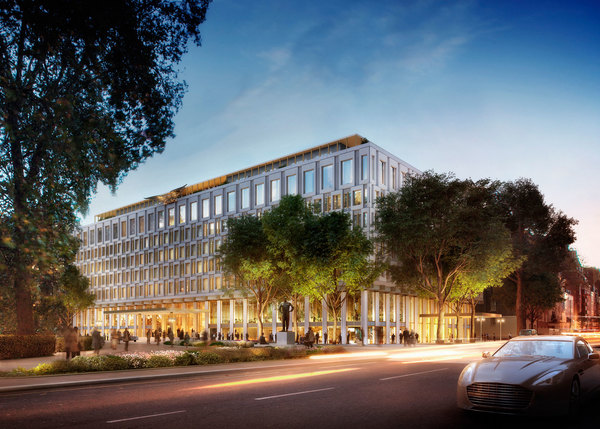Comment
Historic preservation from the UK to New York
As we celebrate 10 years of our Heritage and Townscape service, Consultant, Alessandro Bello considers historic differences between his current home London and his native New York, and explores how buildings can be successfully designed to harmonise the old with the new.
Since joining Turley in June 2019, there have been many notable projects to look back on and, while my time here has been much shorter than some of my colleagues in the team, I feel fortunate to have the opportunity to work on a wide range of historic buildings. This opportunity was a primary motivation when I decided to move from my home in New York City to London.
While the concept of historic preservation is naturally more mature in London than New York City, that’s not to imply that there is not a rich past of historic buildings and reuse in the five NYC boroughs, largely sparked by the mid-20th century loss of the great beaux arts designed Penn Station. A notably different planning system in the U.S.A has allowed for interesting examples of how old and new can be integrated to form a cohesive whole, particularly with the recent phenomena of the “supertall” high rise residential buildings in Manhattan.
One of the finest examples is the recently constructed 111 west 57th street, which features an 84 storey residential skyscraper set behind Steinway Hall, a landmark art deco building from 1925. Steinway Hall was completely refurbished as part of the proposals, and working with the Landmarks Preservation Commission (the NYC equivalent of UK design and conservation officers), SHOP Architects set the new supertall to the rear, rather than adjacent, in order to create an open atrium and retain the ability to read the building in its historic context. While a seemingly impossible task, the tower has been integrated with the historic building through design and use of material, implementing terracotta detailing to the entire façade comprised of thousands of individually cast, fired and hand glazed panels which evoke the “classically New York” expression of the historic building at its base.
I have yet to see an attempt of that scale to integrate the old with the new in London. However, as we look back at 10 years of Turley Heritage and Townscape, there are many outstanding examples of our own projects in the city. Of particular note in my mind is our work on the US embassy building on Grosvenor Square, originally designed by renowned Finnish-American architect Eero Saarinen in 1960 as his first project outside the United States. We undertook a full heritage, townscape and visual impact assessment, and worked with David Chipperfield Architects, planning officers and Historic England to secure consent for a landmark hotel within the existing building. The result of this process is a scheme that seeks to reconcile the fabric of the grade II listed building with the luxurious requirements of a modern hotel.

Overall, these examples demonstrate that regardless of regulations and cultural differences, it is through a careful and calculated design process that harmony can be found between old and new buildings. I am proud to be a part of a team that strives to produce such results.
For more information on the work of our Heritage and Townscape service, please contact a member of the team.
18 January 2021